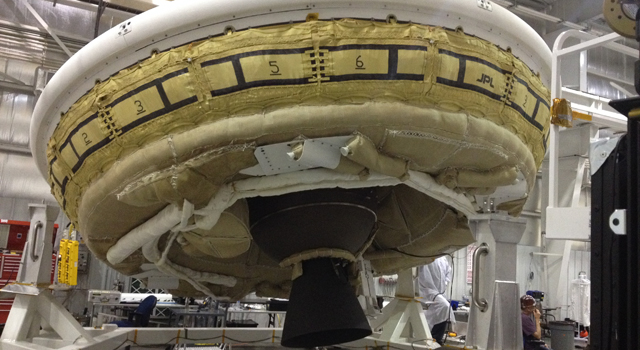
NASA is all set to carry out a test flight for its supersonic 'flying saucer' designed to facilitate astronauts to explore the surface of Mars, landing of robotic crafts as well as safely returning large payloads back to Earth.
The Low-Density Supersonic Decelerator (LDSD) project, saucer-shaped test vehicle will be launched in June from the Navy's Pacific Missile Range Facility on Hawaiian island, Kauai.
"It may seem obvious, but the difference between landing and crashing is stopping. We really only have two options for stopping at Mars: rockets and aerodynamic drag." New Scientist quoted Allen Chen at NASA's Jet Propulsion Laboratory in Pasadena, California.
Until now, NASA had used air bags and parachutes for most of the robotic landings on the red planet.
To replicate Mar's thin atmosphere on our planet Earth, the Hawaii team will raise the test vehicle fitted with a high-altitude balloon to about 23 miles or 37 kms above the Pacific Ocean. The craft will get separated and fire a rocket to reach a height of 34 miles (54 kms).
The experiment in June will be followed by three more test, all to be launched from Hawaii. Although, there is no assurance that the first test will be successful, the team of researchers expects to learn a lot from the test.
"We are pushing the envelope on what we know. We are accepting higher risk with these test flights than we would with a space mission, such as the Mars Science Laboratory. We will learn a great deal even if these tests, conducted here in Earth's atmosphere at relatively low cost, fail to meet some of the mission objectives." said Lan Clark, the LDSD principal investigator from JPL.
"Personally, I think it's a game-changer. You could take a mass to the surface equal to something like one to 10 Curiosities. Think about it like a bridge for humans to Mars. This is the next step in a sequence of technologies that would need to be developed." said Robert Braun at the Georgia Institute of Technology told New Scientist.













